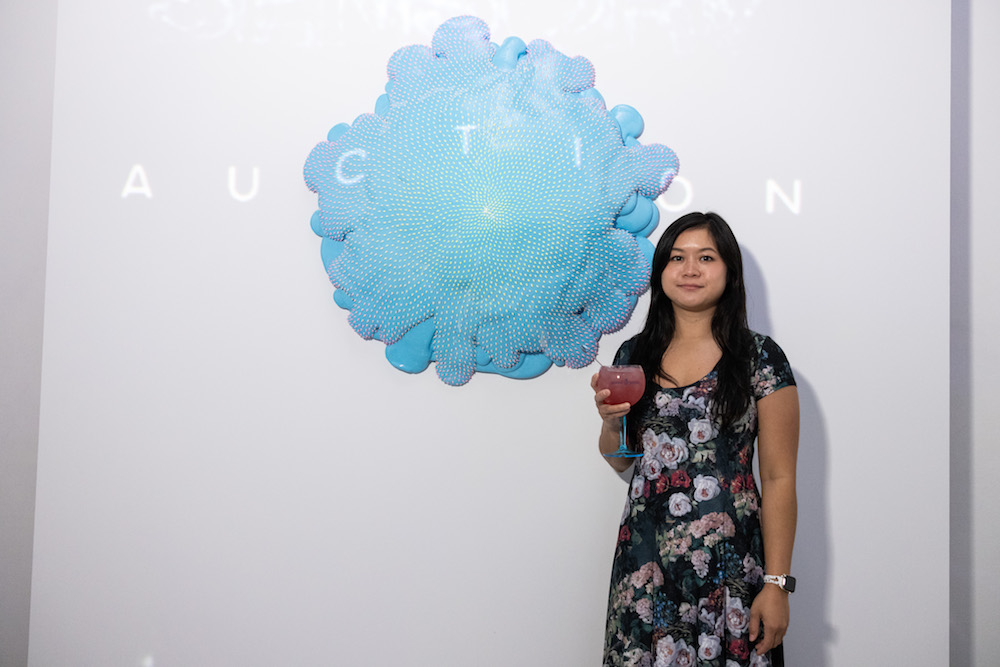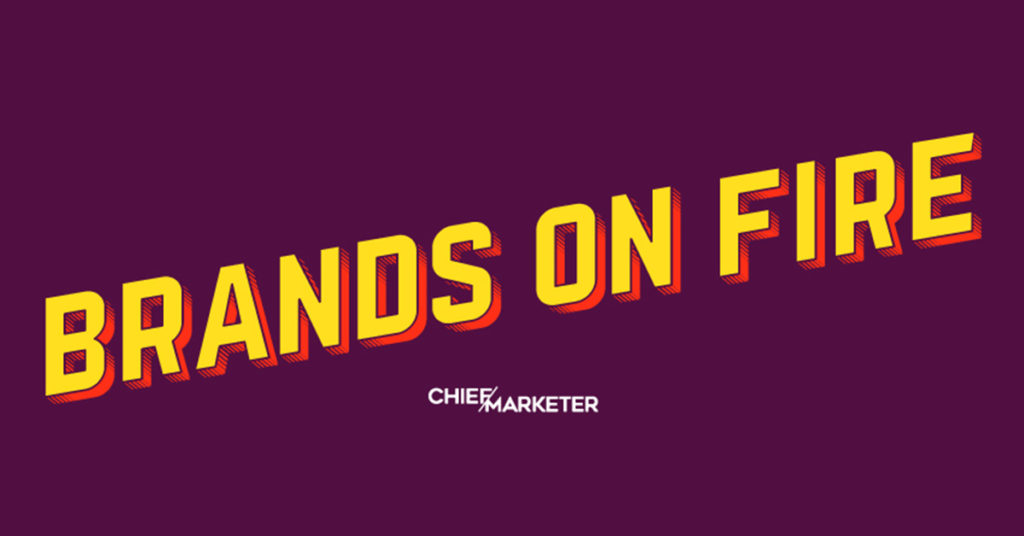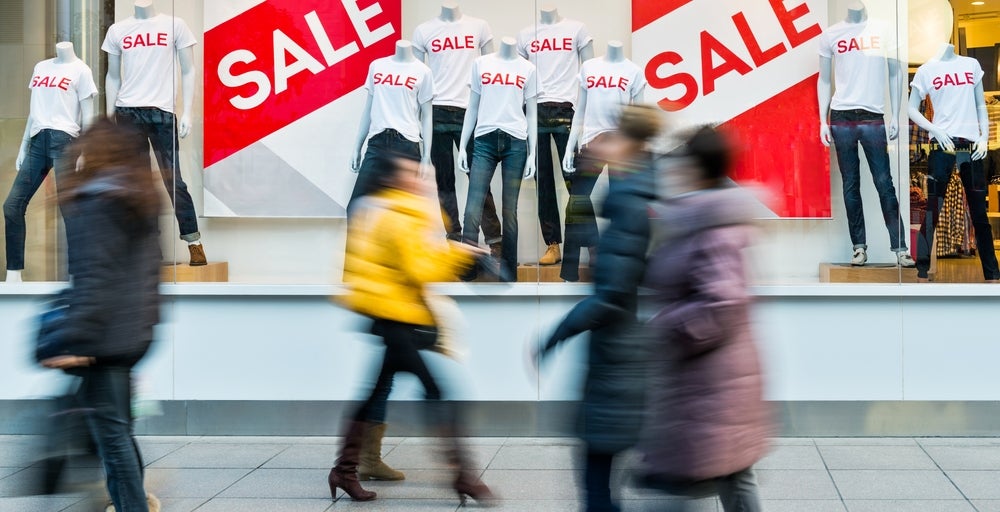It’s not every day that you can take home an artwork valued at $30,000 simply because you enjoyed it more than everyone else did. But thanks to an unusual art experience designed by Bombay Sapphire earlier this month, the only currency accepted at this particular auction was a bidder’s emotional connection to it.
The experience, which measured bidders’ reactions to the artwork using neuroaesthetic technology, highlighted the brand’s efforts to help democratize the art world by making art more accessible, regardless of financial means. “For the first time, we are creating an opportunity for art lovers to be able to bid on an original piece of art using their emotional connection and their senses rather than money,” says Jamie Keller, Brand Director, North America, at Bombay Sapphire.
We spoke with Keller about the inspiration behind the auction, the brand’s larger “Senses Stirred” campaign and its new focus on intimate experiences that hero emerging and underrepresented artists. And for a deep dive into the event itself, check out this case study from CM sister pub Event Marketer.
Chief Marketer: How did the idea of the sensory auction first come about?
Jamie Keller: The sensory auction is a continuation of our new brand campaign, “Senses Stirred.” The focus of the campaign is centered around the gin and tonic and how, when done well, it is so much more than just a cocktail. It’s actually an experience for the senses. The sensory auction was designed to bring that surreal experience of enjoying Bombay and tonic to life.
What’s super exciting is that it’s never been done before. For the first time, we are creating an opportunity for art lovers to be able to bid on an original piece of art using their emotional connection and their senses rather than money, which is the traditional way in which you would bid on art. The press preview was about showcasing the concept and also showcasing how the sensorial auction actually works from a technology standpoint. We partnered with Dan Lam, an emerging artist. She’s got this great visual language in terms of how she creates these 3D sculptures through her creative lens. Her artwork is so exciting and it brings a lot of emotions. It’s really fun and playful.
CM: How is the brand itself reflected in her work?
JK: She’s able to spotlight the elevated and balanced profiles of a Bombay and tonic because of how she uses her art. She’s doing it through layers and complexities of colors and textures, which for her emulated what a Bombay and tonic is all about. [At the press event] we did a representation with one of the models to showcase the technology that is being utilized to measure the artwork. We unveiled the piece of art and we were able to watch the model, live, register for a sensorial bid. We also featured the cocktail that was inspired by Dan, called the “Dan and Tonic,” which was a creative evolution of a traditional Bombay and tonic.
CM: How does the technology that measures bidders’ emotional responses actually work?
JK: The bidders are able to sit down individually with the artwork. So when you’re bidding you’re the only one that is in the room, ensuring it’s quiet and you’re able to focus on the piece. The reactions to the artwork are measured through a unique combination of emotional readings that are able to be recorded, which essentially discovers the piece’s most impassioned owner.
We use something called neuroaesthetic technology. It’s a measure of three specific components. One is the ability to measure brainwave readings with electrodes. Then there is skin galvanic response technology, which is placed on your fingertips. That’s capable of detecting the most minutia of sweat drops. Then lastly, there’s an eye tracking technology, which is sitting in front of them. That measures their focus, engagement and intensity from the depth of their eyes. The scientists are able to take the combination of those three elements and tabulate a single score. And at the end of the auction, the person that has the highest score will actually earn the right to take the piece of art work home with them.
CM: Did you target a typical art crowd for this or did you expand your reach?
JK: This was pushed out through our own channels and some event listings. It was slightly more general market. For us, it was about being able to tap into and find those that appreciate and enjoy art and give them the opportunity to not necessarily be pushed aside, as they may have before in these types of auctions, because price alone may have pushed them away. This actually gives them the opportunity to bid and take home an amazing piece of art because of their emotional connection rather than a dollar value.
CM: Talk about the strategic marketing goals of the activation.
JK: We launched “Stir Creativity” as a brand platform for Bombay back in 2018, and the mission is to inspire creativity within everyone. That is the lens for when do any sort of experience or activation for the brand, whether it’s through our communications or experiences themselves. Now more than ever, leading with purpose is really important to the brand, and this is something where we have the opportunity to participate in a conversation around the democratization of the art world. This event focuses on passion and conviction as a route to collecting your pieces of art instead of access to money. So, when we think about that conversation of the democratization of art, it’s how do we create these more inclusive spaces and make creativity accessible to everybody? Because we do believe that creativity is essential.

CM: Has the pandemic shifted your experiential strategy?
JK: We’re focusing more on intimate art experiences that hero emerging and underrepresented artists who need support now more than ever. I can give you an example. For a new brand launch that we had called Bramble, we partnered with chef Marcus Samuelsson to spotlight rising talent within the art world, [including] local artists Cey Adams and Dianne Smith. Marcus is a world-renowned chef, but also he’s done a lot for the Harlem community here in New York. At a time where there were a lot of empty billboards, we allowed them the opportunity to find their expression of what Bombay Bramble meant to them. They used their art identities and visuals to take the space of billboards in Harlem. It’s another example of supporting artists during a difficult time.
CM: Shifting gears a bit… could you talk about how you’re tapping social media platforms to reach consumers?
JK: For the sensory auction in particular, we use social media to get the word out about the events. We’ll also tap into partnerships with some influencers to help us communicate the story of the sensory auction—and, if they feel appropriate, the conversation we’re having around being more accessible and being inclusive. We partnered with seven influencers for the event to help spread that story. Also, we’re going to be capturing the content not only from the event but also the auction. We’ll be sharing the recap video of everything that we did through our own channels and through paid media to tell the story.
CM: The pandemic forced many spirits brands to double down on ecommerce. How has Bombay experienced this?
JK: There’s no doubt that the ecommerce platform—specifically within spirits—has grown significantly since the pandemic. It was a segment that was growing, but the pandemic definitely catapulted it to another level. We look at partnering with pure-play partners, like Drizzly, Instacart and Retailer.com. So, retailers that have a dotcom that are a source of sales. We definitely think about the role that they play in all of our marketing activities. Specifically when we think about social media, how can we make consumers aware of our brand and create desire to try our brands? We think about the role that ecommerce plays and whether or not we drive consumers to those platforms to be able to purchase, to create a seamless consumer experience.





